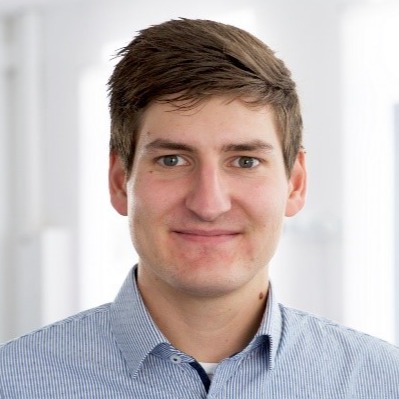Jakob Thumm
Jakob is a postdoctoral scholar in the Department of Aeronautics and Astronautics. His research aims to improve the safety, efficiency, and acceptance of autonomous robots by combining formal methods and machine learning. Jakob focuses on developing algorithms that enable robots to efficiently act in dynamic environments while guaranteeing safety at all times. He is particularly interested in allowing robots to safely work together with humans.
Prior to joining Stanford, Jakob earned his Ph.D. in Computer Engineering from the Technical University of Munich. His doctoral thesis is titled ``Establishing Safe and Preference-Aligned Human-Robot Collaboration in Autonomous Manipulation’’ and passed with highest distinctions. Jakob received his M.Sc. and B.Sc. in Mechatronics from the Karlsruhe Institute of Technology, researching the intersection of system modelling and machine learning.
Outside the lab, Jakob is a passionate runner and volunteer at Sutro Stewards, where he maintains hiking trails in the heart of San Francisco.
ASL Publications
-
R. Römer, J. Balletshofer, J. Thumm, M. Pavone, A. P. Schoellig, and M. Althoff, “From Demonstrations to Safe Deployment: Path-Consistent Safety Filtering for Diffusion Policies,” Proc. IEEE Conf. on Robotics and Automation, 2026. (Submitted)
Abstract: Diffusion policies (DPs) achieve state-of-the-art performance on complex manipulation tasks by learning from large-scale demonstration datasets, often spanning multiple embodiments and environments. However, they cannot guarantee safe behavior, so external safety mechanisms are needed. These, however, alter actions in ways unseen during training, causing unpredictable behavior and performance degradation. To address these problems, we propose path-consistent safety filtering (PACS) for DPs. Our approach performs path-consistent braking on a trajectory computed from the sequence of generated actions. In this way, we keep execution consistent with the policy’s training distribution, maintaining the learned, task-completing behavior. To enable a real-time deployment and handle uncertainties, we verify safety using set-based reachability analysis. Our experimental evaluation in simulation and on three challenging real-world human-robot interaction tasks shows that PACS (a) provides formal safety guarantees in dynamic environments, (b) preserves task success rates, and (c) outperforms reactive safety approaches, such as control barrier functions, by up to 68% in terms of task success. Videos are available at our project website: https://tum-lsy.github.io/pacs/.
@article{RoemerBalletshoferEtAl2026, author = {R{\"o}mer, R. and Balletshofer, J. and Thumm, J. and Pavone, M. and Schoellig, A. P. and Althoff, M.}, title = {From Demonstrations to Safe Deployment: Path-Consistent Safety Filtering for Diffusion Policies}, booktitle = {{Proc. IEEE Conf. on Robotics and Automation}}, year = {2026}, note = {Submitted}, url = {http://arxiv.org/abs/2511.06385}, keywords = {sub}, owner = {thumm}, timestamp = {2025-11-13} } -
J. Thumm, C. Agia, M. Pavone, and M. Althoff, “Text2Interaction: Establishing Safe and Preferable Human-Robot Interaction,” in Conf. on Robot Learning, Munich, Germany, 2024. (In Press)
Abstract: Adjusting robot behavior to human preferences can require intensive human feedback, preventing quick adaptation to new users and changing circumstances. Moreover, current approaches typically treat user preferences as a reward, which requires a manual balance between task success and user satisfaction. To integrate new user preferences in a zero-shot manner, our proposed Text2Interaction framework invokes large language models to generate a task plan, motion preferences as Python code, and parameters of a safety controller. By maximizing the combined probability of task completion and user satisfaction instead of a weighted sum of rewards, we can reliably find plans that fulfill both requirements. We find that 83% of users working with Text2Interaction agree that it integrates their preferences into the plan of the robot, and 94% prefer Text2Interaction over the baseline. Our ablation study shows that Text2Interaction aligns better with unseen preferences than other baselines while maintaining a high success rate. Real-world demonstrations and code are made available at sites.google.com/view/text2interaction.
@inproceedings{ThummAgiaEtAl2024, author = {Thumm, J. and Agia, C. and Pavone, M. and Althoff, M.}, title = {Text2Interaction: Establishing Safe and Preferable Human-Robot Interaction}, booktitle = {{Conf. on Robot Learning}}, year = {2024}, month = nov, address = {Munich, Germany}, keywords = {press}, note = {In press}, owner = {agia}, timestamp = {2024-10-30}, url = {https://arxiv.org/abs/2408.06105} }
